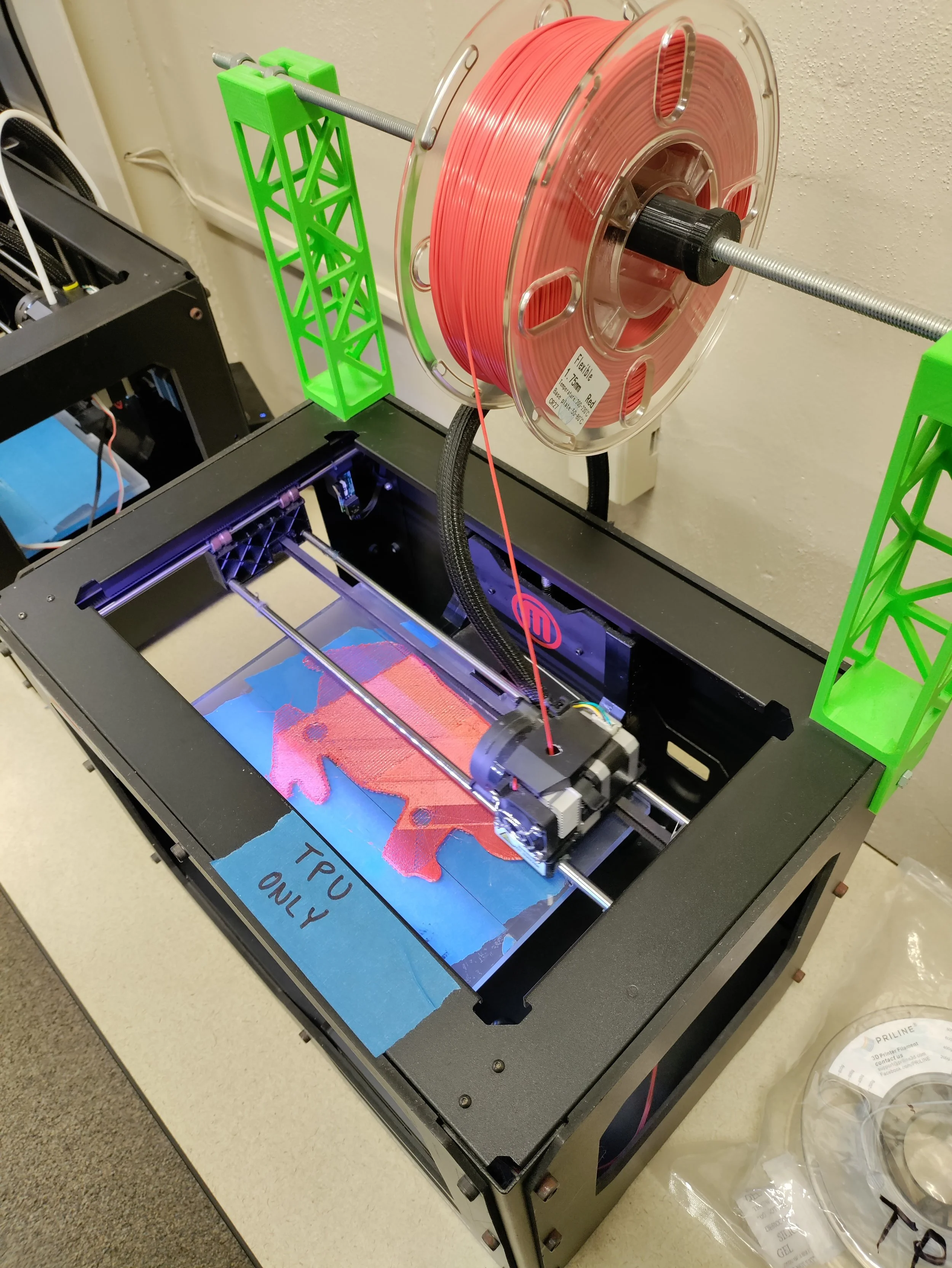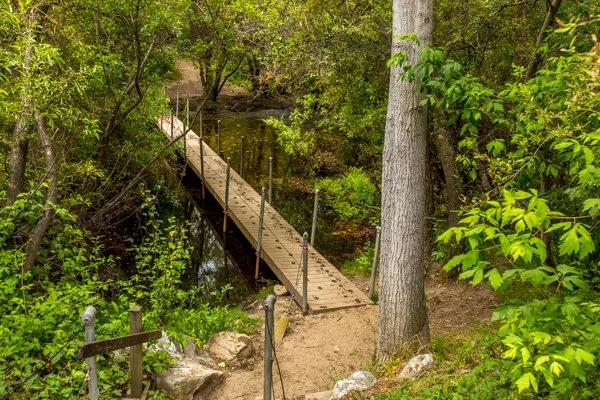Replication of Plaster-casted Animals In The Medium of TPU
About the Mural
This is the interactive mural at the Garland Regional Park Visitor Center. The scene depicted is the nearby creek bridge, that visitors can access from the parking lot. Each animal is held into place by magnets embedded into the animal piece and mural background. The goal of the mural is educate visitors about animals that visit the creek. On both sides of the mural are placards with facts about each animal. At the end of the interaction, visitors should be familiar with each animal’s name, where they live, what they eat, and other natural history facts.
This mural was created by David McCornack, an expert in natural history exhibit fabrication. The mural was created using plaster cast resin and Acrylic paints. The mural is a huge success and is always interacted with by the guests. The downside is that with constant handling comes excessive wear on the pieces. Circled in the photo are a Kingfisher with a broken wing, Bobcat with a broken ear & tail, and a turtle with a broken neck that has been re-glued. David can easily create replicas, however we run into the same problem of excessive wear and weak spots. It would be unsustainable to create multiple replicas and the park may not have the funds to have all these extras on hands. My professor, Gary Quinonez (MA), introduced me to David to think of how we could create alternative replicas while solving the above issues.
Scanning the pieces
The process starts with 3D scanning the animals. An Einscan SP scanner was used for the project. Multiple HDR textured scans were used to retain the original detail. This especially helped with varying dark colors and crevices that each animal had. The scans also provided information about weak spots on each model and where the original magnets were placed.
Post-Scan 3D software work
After scanning, we can use 3D software to enhance or better prep the models for printing. We start with flattening the back of each model to make for easier printing. We can also use a special boolean tool to create slots for the magnets beforehand. We can also use this time to repair the model, enhance details, or fortify weak points.
For example, the bobcat model has a new ear and is thicker to increase rigidity. The turtle’s neck was modified to be thicker while retaining artist integrity.
Choosing the right filament
Thermoplastic Polyurethane or TPU for short, is our primary choice of filament for the project. TPU filament is known to be flexible and when printed with a 20%-30% infill, creates a strong and flexible print. This means the print can take any conventional use that will be seen at the visitor center, and is rigid enough to print in high detail to retain the original look.
TPU brand specific was Matter Hacker, link to spool used on image.
Printing the 3D file
There are two printers that we chose for this project. The Makerbot Replicator 2 and the Tevo Tornado. The Makerbot is our primary printer choice because of it’s direct drive extruder and smooth acrylic build plate. The direct drive allows for a smoother feed of the flexible filament. while the smooth plate allows for the TPU to adhere better.
The Tevo Tornado printer is our backup printer in case the model exceeds the dimensions of the Makerbot. We are confident the Tevo could print just as well as the Makerbot because of its core features: high temperature capacity in its extruder system, glass build plate, and its speed & control for larger prints. When tuned correctly the TEVO tornado prints incredibly well.
MakerBot Replicator 2 direct drive system feeding TPU
filament directly to the build plate.
Tevo Tornado with a bowden drive system and larger
glass build plate to help the print adhere to it.
Handed back to the original artist for paint work
My portion of the work ends here. After printing the models, I hand them back to David for him to decorate with his specialized primers and paints. As of December 2022, the print pieces are being finalized and await their debut at the Garland Ranch Visitor Center. I will update this article when the pieces are installed!
If you are wanting to know more about the process, I’ve provided a discussion section below.
Discussion and summary
As of December 2022, the models are currently being painted and awaiting their debut at the Garland Regional Park Visitor Center. While we wait, I would like to reflect on our tests of the filament. Throwing the print around the hall ways and exaggerating any drop damage or mishandling, I am confident that TPU is going to remove any need of replacement unless something unconventional happens to it.
Considering the cost of TPU filament and the labor that goes into scanning, modeling, priming and painting. There is not much of a cost difference between plaster cast and a TPU replicate. Yes, Polyurethane is not as ecologically friendly as Polylactic Acid (PLA) Filament; however PLA prints will eventually break and need to be replaced with more prints. While printing once with TPU solves the wear and tear issue completely.
Our limiting factor of detail would be the filament and printer itself. We get diminishing returns of details on our models whether we print them at 1.0mm or 1.6mm layers. Considering we were able to do this with a makerbot Replicator 2, I’d say the technology is still peak.
Garland Ranch Creek Bridge, click the picture to go to Monterey Peninsula Regional Park District website to learn more about the park.








